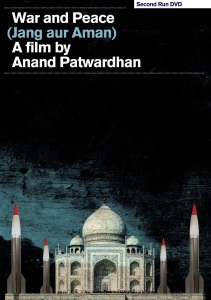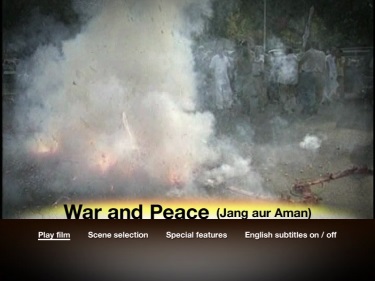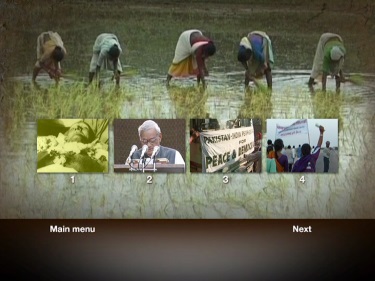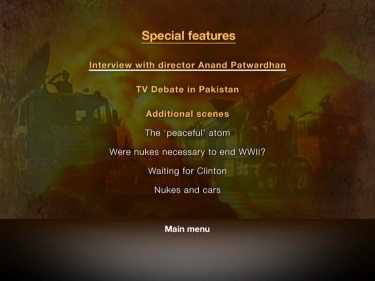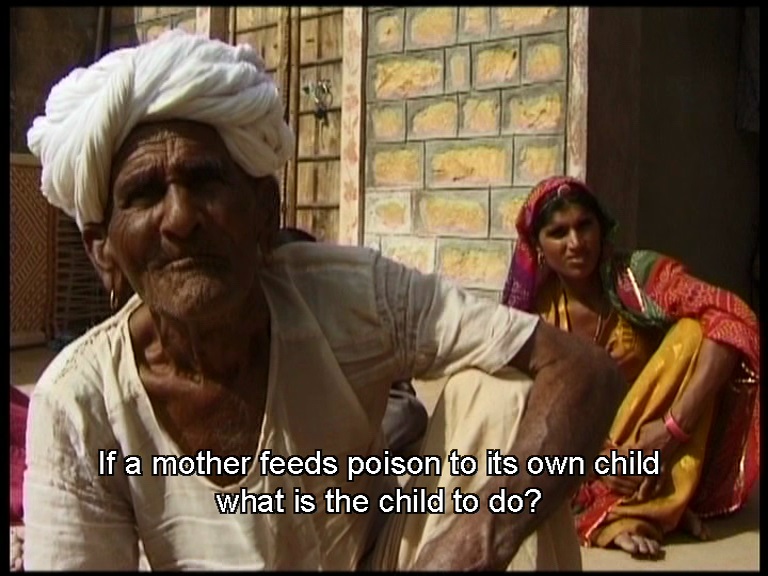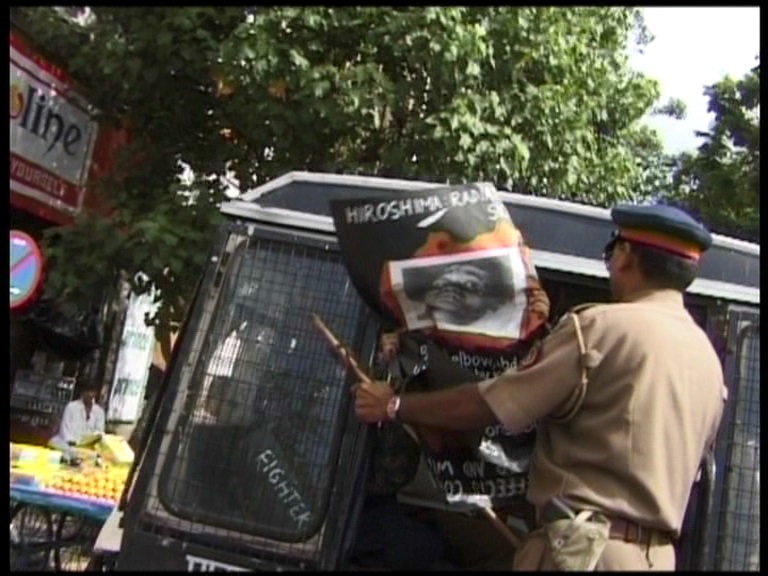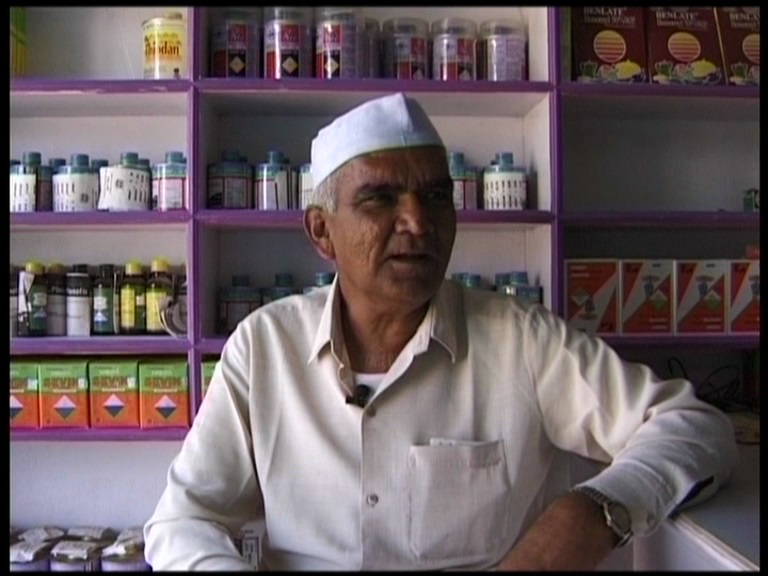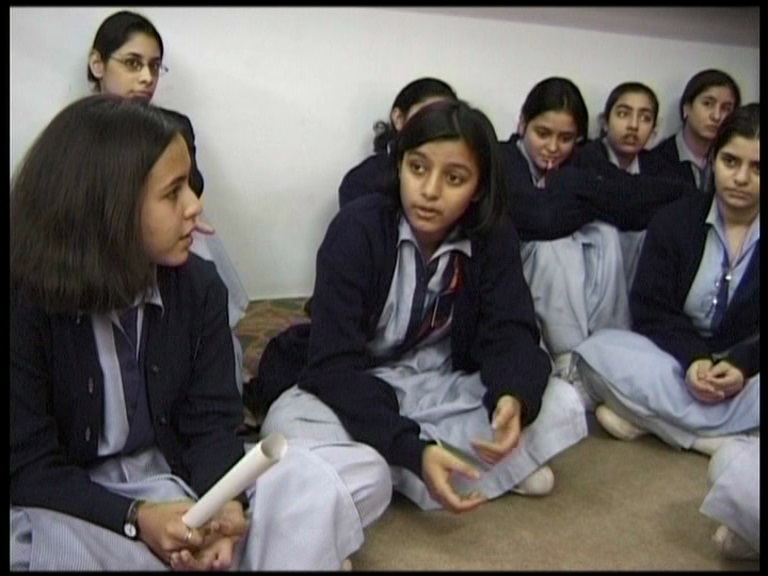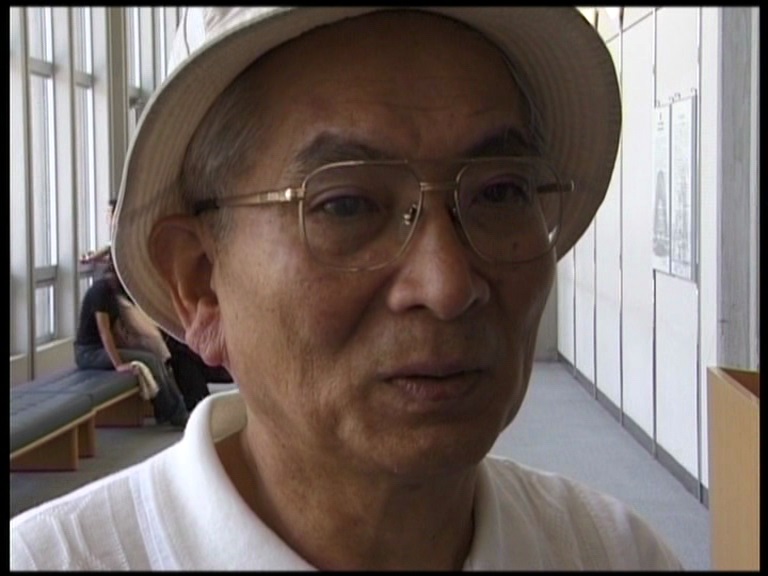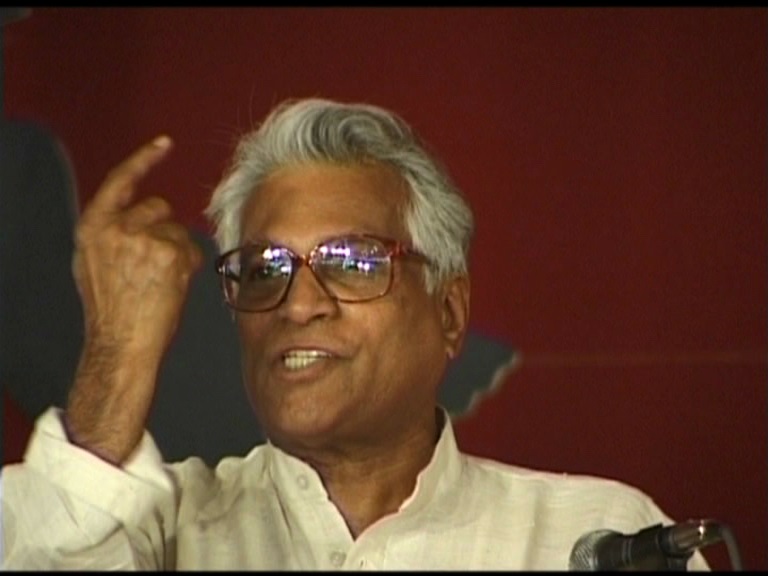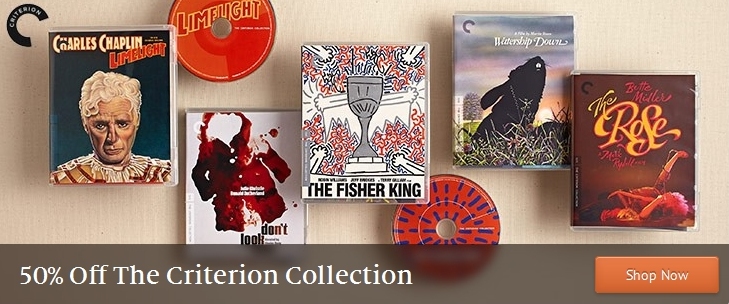
![]()
![]()

![]()
![]()
|
Search DVDBeaver |
S E A R C H D V D B e a v e r |
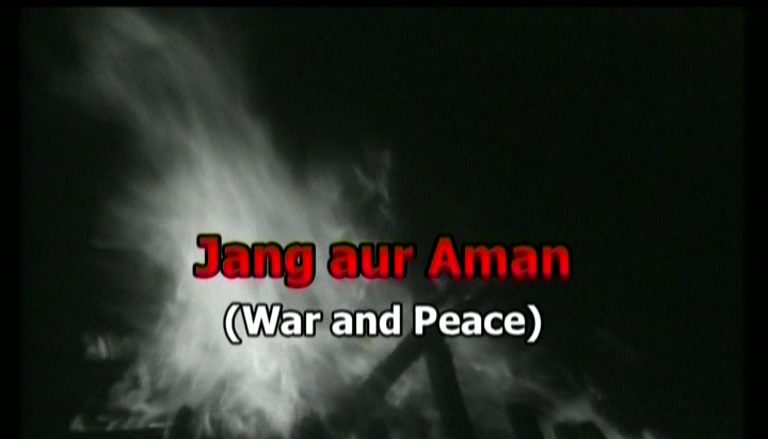
(aka "Jang Aur Aman" )
directed by Anand Patwardhan
India 2002
|
In the two-part documentary WAR AND PEACE, filmmaker Anand Patwardhan comprehensively demonstrates through the attitudes of his interview subjects (as well as news clips and commercial media) how arms race between India and Pakistan was not for security reasons but an expression of "nuclear nationalism" as both countries sought recognition and status on the international stage on the level of America and the Soviet Union. Instead, they succeeded in destabilizing the region with a series of martyr-producing battles and poisoning villages and wildlife in the vicinity of testing sites. The language of nuclear armament became enmeshed with both fanatical religious discourse and the conservative ruling BJP party (there is a very telling scene midway through the film in which Patwardhan interviews a debate class in which a girl explains that she chose to speak in support of the bomb because the argument stirred the most passion and therefore garnered the most points). Anti-nuclear sentiments, on the other hand, have become associated not only with the peace movements but also advocates of alternative energy and followers of non-violent religious movements (with Buddhists taking particular offense to Indira Gandhi's "The Buddha is smiling" as code for a successful nuclear test), as well as the parents and friends of some of the martyred soldiers. Among the villagers whose numbers have been stricken with cancer, birth defects, and a rise in infant mortality, Patwardhan finds a mix of patriotism, denial, and delusion alongside a cynicism of those who feel wronged but know nothing will come of complaining about health issues or the government's expenses on nuclear and military development over social welfare. Traveling into Pakistan, Patwardhan finds a mirror image of India in the Muslim world. The second part of the film may not be so informative to American audiences now as it was not so long ago as it discusses the damage wrought by the Enola Gay, travels to Hiroshima and Nagasaki to hear accounts of survivors, and to the states to hear from Smithsonian historians who had their patriotism challenged by politicians and veterans when they attempted to show that the war was over before the bomb was dropped. Nevertheless, the re-release of the film to English-speaking audiences now (it has been available if not easily accessible stateside from Icarus Films since 2003) is as timely now as it was when released in 2002 while covering a range of events spanning from 1974 to 1998. |
Theatrical Release: 25 June 2003 (USA)
Reviews More Reviews DVD Reviews
DVD Review: Second Run - Region 0 - PAL
Big thanks to Eric Cotenas for the Review!
| DVD Box Cover |
|
CLICK to order from: |
| Distribution |
Second Run Region 0 - PAL |
|
| Runtime | 2:13:32 (4% PAL speedup) | |
| Video |
1.33:1 Original Aspect Ratio |
|
|
NOTE: The Vertical axis represents the bits transferred per second. The Horizontal is the time in minutes. |
||
| Bitrate |
|
|
| Audio | Hindi/Urdu/English/Pushto/Japanese Dolby Digital 2.0 stereo | |
| Subtitles | English, none | |
| Features |
Release
Information: Studio: Second Run
Aspect Ratio:
Edition
Details: Chapters 8 |
|
| Comments |
Second Run's
dual-layer director-approved transfer looks
variable as expected given the mix of
sources and the original videography but it
gets the job done. The Dolby Digital 2.0
stereo soundtrack is in fine condition and
the optional English subtitles do an
admirable job of translating the
rapidly-spoken and sometimes overlapping
dialogue. |
DVD
Menus
|
|
|
|
|
Screen Captures
Subtitle sample
|
|
|
|
|
|
|
|
|
|
|
|
|
|
| DVD Box Cover |
|
CLICK to order from: |
| Distribution |
Second Run Region 0 - PAL |
|
![]()
![]()

![]()
![]()
 Search DVDBeaver |
S E A R C H D V D B e a v e r |

